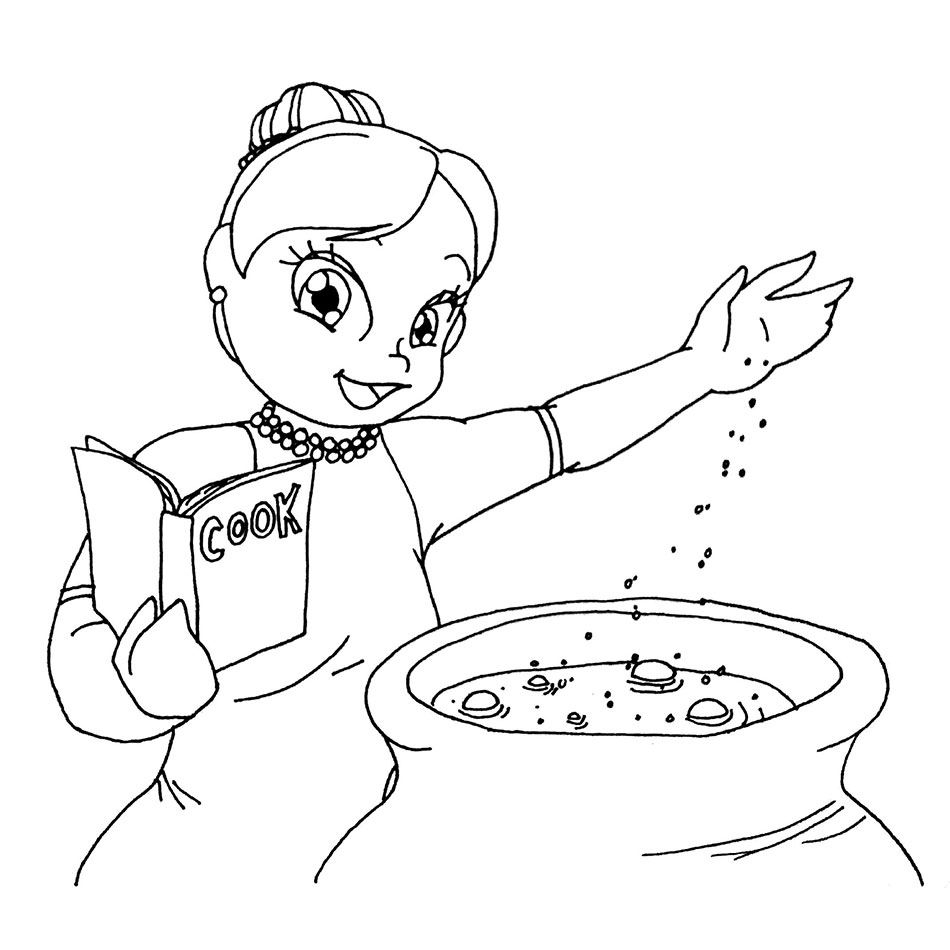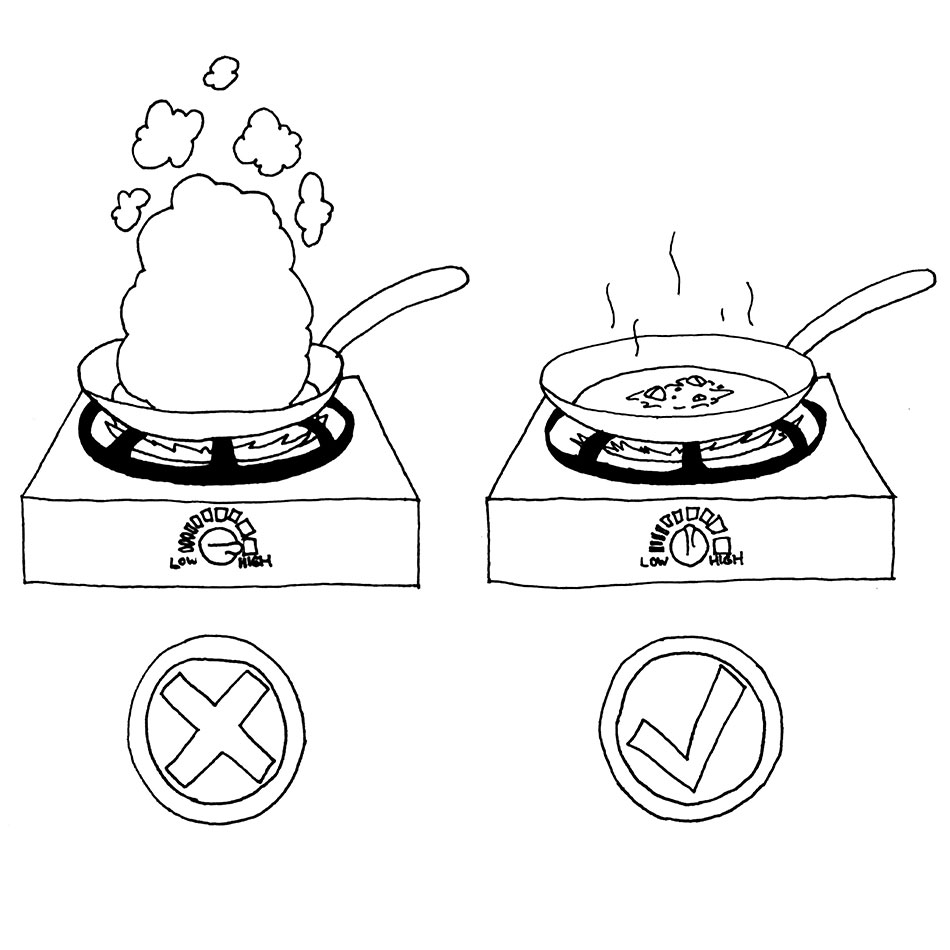Beginner Culinary Lessons
Contained in the first twelve lessons is the basic culinary information that you will need to know and understand the later lessons. This builds the foundation on which you will be able to not only cook, but UNDERSTAND what you are doing. As a Chef who attended culinary school, I often felt that we were never taught the WHY of flavor and that schools only focused on the HOW. With this in mind i have endeavored to create lessons that are fun, and easy to understand. Even if you are an experienced cook I really do recommend that you begin here so you can have a well-rounded understanding of cooking. 🙂
Lesson 1: What is Flavor?
What is flavor? And how do we experience it?
If someone were to ask you to define the idea of flavor to someone who had never eaten before, how would you describe it? Would you aim for the scientific concept of the action of chewing and the detection of chemical compounds and flavors by the tongue? Would you then go on to explain that the human tongue is a sensory organ used to move chewed food into your esophagus and it also serves to detect flavors in your mouth? Would you go for an artistic answer and say that flavor is the culmination of ingredients and preparation methods, which then we experience when we eat?
Let’s begin by defining flavor: What is flavor, and Where does it come from?
Lesson 2: Taste and the 5 Flavors
Taste itself, is in reality only a small fraction of the sensory experience of cooking and eating. What you actually taste when you eat are 5 primal flavors which are: salty, savory, spicy, sour, and sweet. Each one of these basic taste sensations lends itself as a piece of the whole sensory experience.
Flavor is a tricky and complicated concept. It is made up of many different aspects of senses as well as senses in their entirety. Let’s start with the basics of the tongue. The human tongue only tastes a few basic flavors. This is actually such a controversial subject that it is still hotly debated whether or not certain flavors constitute tasting or just a secondary experience. The most commonly accepted flavors that your tongue tastes are: salty, savory, sour, bitter, and sweet. I like to add spicy to this list as well, seeing as you experience spicy on your tongue just like the other flavors. I don’t consider bitter to be a flavor, but I consider it to be a survival mechanism. Therefore, I do not include it in the 5 flavors. So for simplicity—and for our sanity—we will say that the following are the flavors that you actually taste with your tongue: salty, savory, spicy, sour, and sweet.
Lesson 3: Mixing the 5 Flavors
Now that we have a basic understanding of the 5 flavors as they exist independently, we now need to discuss the interactions that 2 or more flavors have while interacting simultaneously.
Lesson 4: Herbs and Spices
Now that we are familiar with taste, its complexities, and the basics of our other senses, we need to talk a little more in depth about smell. Or, what I call “the nose of your food.” You can make many fantastic dishes with very basic ingredients, like kosher salt, MSG, black pepper, red wine vinegar, and granulated sugar. But, what we want to do is give our food some character and maybe add a few aromatic qualities to give our food even more appeal. To do this, we are going to add spices and herbs. Many times people get confused as to what the differences are between the two. It’s very simple.
Lesson 5: Aromatics
Something like 90 percent of all experiences that you have with food are actually nasal related. This is super important to know, because embracing the role that your nose plays in the eating experience will enable you to create richer, fuller eating experiences. As I have previously pointed out, it is the smell of a pot roast that causes you to salivate. So, we will continue with this idea and venture further in-depth into the world of how to use aromatics and your sense of smell to your advantage.
Lesson 6: The Other Senses
This lesson explores how the other senses come into play during the eating experience.
Lesson 7: Learn Your Own Palate
Understanding the simple culinary theories on flavor is very important. By understanding flavor and its root, you can begin to understand how to develop flavors you love and learn to omit, augment, or modify flavors that you don’t like. Many dishes or recipes may also contain a food that you may not care for, but was important for a specific flavor quality that needed to be extracted. A perfect example of this is in the manufacture of perfume. The best perfumes in the world are not simply sweet or floral. They always have a touch of a bitter or offensive odor that adds complexity to the perfume. The same is true for food as well. Take cumin for example. Quite frankly, raw ground cumin smells like unwashed arm pits. But, when employed with chicken or pork, it becomes a warm and filling spice that grants depth of character. Before we can begin to build that depth of character, YOU MUST learn through experience the flavors you enjoy and the flavors you dislike. Then you can decide if it is because it is the root flavor, or if it is because of a combination of flavors. In this section, I will be teaching you a proper method for self discovery and how to understand flavor in the real world.
Lesson 8: Basic Ingredients You Should Always Have in Your Kitchen
It’s time to start discussing the actual cooking part of the cooking experience. But before we do this, let’s make sure that we have the right basic ingredients in our kitchen at all times so that we can guarantee a fun and stress free cooking environment. The following list of ingredients are absolute basic requirements that everybody should carry regardless of culinary preference. You will notice that this list focuses on building Roundness of Flavor, not on building aromatic quality. To build aromatic quality in your dishes, you will have to purchase herbs and spices to fill out your culinary repertoire.
Lesson 9: MSG, Miso, Soy and Umami
These days there is a word that you will hear everywhere, especially if you watch the certain cooking and food focused television networks, or go to a higher end restaurant where the chef is trying to be pretentious. That word is “Umami.” It is usually followed by the words “Miso” and “Soy” and the combination of the words looks something like “A delicious Miso-Soy broth to really highlight the Umami flavors of the dish.” These words don’t mean anything to you. But, what they actually mean is that they have used Miso soup base and soy sauce to build the savory flavor. By using these words, they trick you into thinking and believing that this is some kind of magical Asian fusion that only master chef’s can make. But all they have done is add MSG to their food in the longest, least understood, and most impractical way imaginable.
Lesson 10: Picking Kitchen Cookware
Not all equipment is created equal! The first thing you should know about kitchen equipment is that price does not always dictate quality. In home goods, most items are priced based on the brand name, color, and material they are made of. If you can get your hands on a good set of restaurant grade equipment at your local restaurant supply company, you will be all the happier for it. Restaurant grade equipment is about the same price as medium-level home goods, but the quality and construction are much higher and can tolerate much more abuse. Having worked in restaurant kitchens, you wouldn’t believe the amount of times I have watched a cook try to destroy a restaurant grade sauté pan simply because they were angry, and the sauté pan suffered little to no actual damage. Restaurant grade equipment is not as pretty or decorative as home cookware, but I believe in function over form.
Lesson 11: Knives and Knife Cuts
Knives and Knife Cuts are an essential and indispensable part of the cooking experience!
Lesson 12: Techniques to Stop Burning Your Food
We are so close to beginning to cook! But before you get your hands on that hot stove, I need to teach you the most important idea to keep in your head when you cook. That idea is to understand how NOT to burn your food. But first, we must understand the purpose of heat in our cooking. What is the role of heat inside of cooking?











